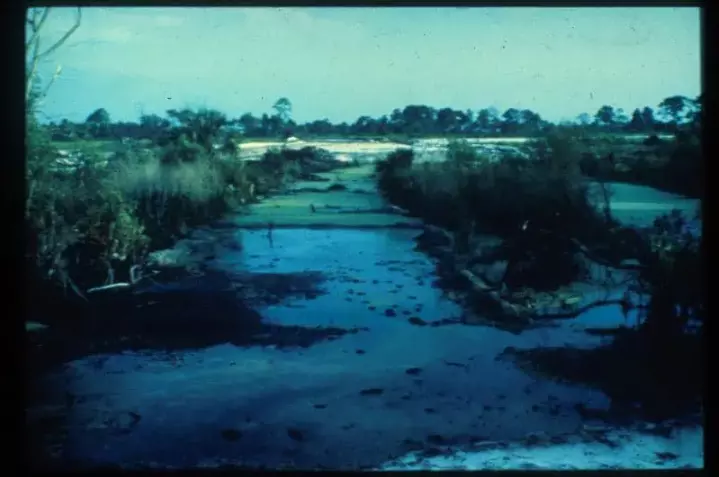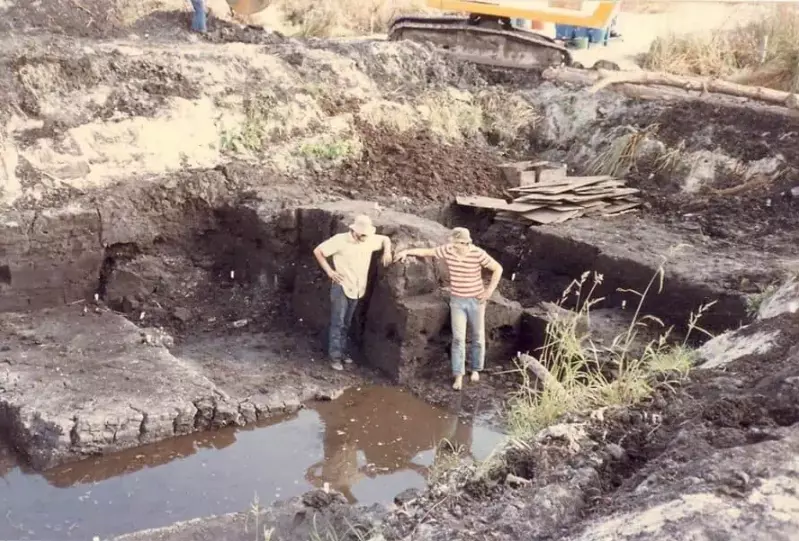The Windover bog bodies, among the strangest archaeological finds ever Unearthed in North America
Only after the bones were determined to be very old and not the result of a mass murder, did the 167 bodies discovered in a pond in Windover, Florida, begin to pique the interest of archaeologists.

Researchers from Florida State University arrived at the site, believing that more Native American skeletons had been discovered in the swamps.
They estimated the bones to be 500-600 years old. The bones were then radiocarbon dated. The ages of the corpses ranged from 6,990 to 8,120 years. The academic community became ecstatic at this point. The Windover Bog has turned out to be one of the most significant archaeological discoveries in the United States.
Steve Vanderjagt, the discoverer, was using a backhoe to demuck the pond in 1982 for the development of a new subdivision about halfway between Disney World and Cape Canaveral. Vanderjagt was confused by the large number of rocks in the pond because that part of Florida was not known for its rocky terrain.
Vanderjagt got out of his backhoe and went to check, only to discover that he had found a massive pile of bones. He immediately contacted the authorities. The place was only preserved because of his natural curiosity.
After the medical examiners declared that they were too old, specialists from Florida State University were brought in (another brilliant move by Vanderjagt- too often sites are ruined because experts are not called).
EKS Corporation, the site’s developers, were so fascinated that they funded the radiocarbon dating. Following the discovery of the startling dates, the State of Florida provided funding for the excavation.

Unlike the human remains discovered in European bogs, the bodies discovered in Florida are just skeletons — no flesh remains on the bones.
However, this does not diminish their value. Brain matter was found in nearly half of the skulls. The bulk of the bones were discovered laying on their left sides, heads facing westward, maybe toward the setting sun, and faces pointing north.
Most were in the foetal position, with their legs tucked up, but three were laying upright. Interestingly, each body had a spike driven through the loose cloth that encased it, probably to keep it from rising to the top of the water as decomposition filled it with air. This practical measure eventually safeguarded the remains from scavengers (animals and grave robbers) and preserved them in their proper placements.
The discovery gives unprecedented insight into a hunter-gatherer culture that lived in the area about 7,000 years ago, more than 2,000 years before Egypt’s Pyramids were erected. In the decades after their discovery, the bones and objects discovered alongside them have been examined nearly continually.
The study presents a picture of a difficult but rewarding existence in pre-Columbian Florida. Despite subsisting mostly on what they could hunt and collect, the group was stationary, suggesting that whatever problems they had were minor in comparison to the benefits of the region they chose to live in.
Theirs was a really loving civilization. Almost all of the children’s bodies discovered had tiny toys in their arms. One elderly woman, maybe in her fifties, appeared to have multiple fractured bones.
The fractures happened several years before her death, indicating that despite her disability, the other villagers cared for and assisted her even after she could no longer contribute meaningfully to the workload.

Another body, that of a 15-year-old boy, revealed that he had spina bifida, a severe birth condition in which the vertebrae do not develop properly together around the spinal cord.
Despite his many damaged bones, evidence shows that he was loved and tended for his whole life. When one considers how many ancient (and even a few current) cultures abandoned the weak and disfigured, these discoveries are mind-boggling.
The contents of the bodies, as well as other organic remains discovered in the bog, show a diverse environment. Paleobotanists found 30 edible and/or therapeutic plant species; berries and tiny fruits were especially essential to the community’s nutrition.
One lady, maybe 35 years old, was discovered with a mixture of elderberry, nightshade, and holly in the place where her stomach would have been, implying that she was consuming medical plants to treat an ailment.
Unfortunately, the combination did not work, and whatever ailment the woman had eventually killed her. Surprisingly, the elderberry woman was one of the few bodies that was spread out rather than coiled up, with her face looking downward. Elderberries were also utilised to treat viral illnesses in other Native American cultures.
Another notable distinction between the Windover bog people and their European counterparts is that none of the Floridians died violently. Men, women, and children are among the corpses. When they died, almost half of the bodies were younger than 20 years old, while several were far over 70 years old.

This was a relatively low death rate given the location and period. The presence of brain tissue in 91 of the corpses implies that they were buried soon after death, within 48 hours.
Scientists know this because, given Florida’s hot, humid environment, brains would have melted in bodies that were not buried immediately.
Surprisingly, DNA examination of the bones reveals that these corpses have no biological ties to the more recent Native American populations known to have resided in the area.
Recognizing the limitations of latest technologies, roughly half of the Windover site was preserved as a designated National Historic Landmark, so that archaeologists might return to the bog in 50 or 100 years to uncover undisturbed remains.




